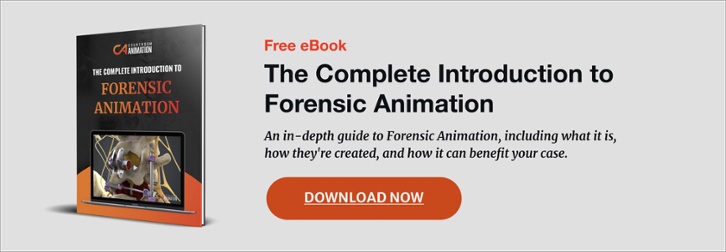
We live in a fast-paced world where attention spans are short – most movies are under two hours because people can’t sit still for longer and our heads are always buried in a phone or a tablet taking in so much information in the form of headlines and soundbites.
Nevertheless, there is an expectation for juries to sit through lengthy trials, be attentive to hours of oral presentations and verbal testimony over the course of many days and sometimes months. Then we want them to understand the evidence and information that was presented to them and remember all the key points that were made and come to a just verdict.
In the same way that the world has changed with the emergence of new technology, life in the courtroom has also shifted to focus more on sophisticated testimony and scientific evidence versus a basic establishment of credibility.
Helping a jury understand the complex and repetitive information of a case is difficult and challenging. Legal teams have to get creative on how they present the facts of a case in a way that is entertaining and relevant. Sometimes it can take hours to explain how a small detail is a vital piece of evidence.
What’s even more difficult is ensuring that the jury will remember and comprehend all of the information you’re sharing with them.
Today’s lawyers and attorneys need to approach a trial as a game of “show and tell.”
Psychological studies have shown that jurors will only remember a fraction of what they hear and more of what they see. They understand best when information is presented to them both verbally and visually. Our brains process information much faster when it is presented to us visually versus orally or via text.
Ultimately, incorporating visual exhibits like trial animations into the litigation process can have a powerful impact on the final outcome of the case. An animation can be a key tool to help the jury ‘get the message.’
A picture is worth a thousand words…but what are your thousand words really worth?
We live in a visual society. The average citizen (potential juror) spends hours in front of monitors, televisions, and mobile phones. It’s how we interact, learn, and respond to new information.

One study found that:
Only 25% of spoken information was retained after just 3 hours. On the other hand, 80% of information presented in a visual and verbal way was retained in the same time frame. It goes hand in hand with long term memory – only 10% of spoken information will still be remembered after 3 days, but on the other hand people are more likely to recall a whopping 65% of visual and verbal information.
Think about it – when was the last time you tried to put together IKEA furniture without looking at the pictures?
Imagine how much easier it would be to assemble a dresser or a bookcase if you had a video!
Do you want the jury to try and assemble the pieces of your case without a visual aid?
Whether your client is involved in a personal injury case, medical malpractice, or motor vehicle accident, a 3D animation could make the difference between a well put together case, or a verdict that leaves your client’s case in pieces.
Graphics, illustrations, trial animation and other visual resources can be used in a wide range of cases.
How Trial Animation is Used in the Courtroom
Here is a breakdown of the most common scenarios when trial animations are being used:
- Cases that contain a lot of technical information or are very complex – like medical malpractice
- When there is a need to highlight different moving parts of a piece of equipment or machinery – like the brake system in a car
- When time, motion or speed needs to be slowed down in order to better explain what happened
- When there is complex expert testimony that is difficult to understand or visualize
- When it is not possible to recreate the events in a specific scenario, or if you need to explore the situation from different angles
- If you need to establish a very clear and visual timeline
Trial animation can show how a car accident occurred, interactively present data, charts, graphs or timelines and even break down the human anatomy to enhance understanding.
After spending time, money and effort to get a custom trial exhibit produced for your case, it’s important to make sure that the jury will actually get to see this piece of evidence.
We’re proud to boast a 99% admittance rate in more than 2,000 cases, and we have successfully helped to secure more than $1 billion in favorable verdicts and settlements for our clients.
Courtroom Animation is a legal animation and graphics studio that creates scientifically accurate and highly realistic 3D trial animations.
Our visual exhibits have been used in thousands of cases and have helped our clients achieve favorable legal outcomes in mediations, arbitrations and across various trial settings. We were founded on the principle that seeing is believing – the best way to tell a story is to show it.
If you are curious whether trial animations would be beneficial to your specific case, then please don’t hesitate to connect with our team. We would be happy to go over our services with you and make a custom recommendation that we think would bring you the most success based on your needs.
We can also show you samples of our more recent work, share results and client testimonials and assist you and your legal team in crafting the perfect strategy complete with trial animation to support your argument.

Topics: